A growing concern among jurisdictions across the U.S. is the increasing amount of municipal solid waste entering treatment plants — generally comprised of and categorized as food, green, dry, and recycling. One simple option to reduce the stress on waste treatment facilities is to pre-sort the materials, which also reduces the amount of waste going to landfills. Although inexpensive and effective, this route critically depends on residents’ participation — an element that can be difficult to assure in order to achieve a successful outcome.
George Mason’s Kuo Tian and Ran Ji wanted to tackle this challenge. Tian specializes in geoenvironmental engineering and Ji’s expertise is in system engineering. Their proposal to 4-VA@Mason focused on developing a decision support framework integrating the residential waste sorting process and real-time collection demand information.
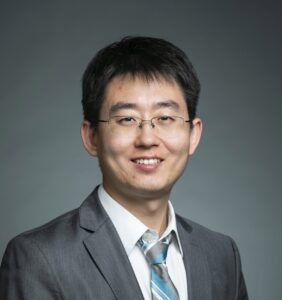

The project team aimed to incorporate a range of interdisciplinary knowledge in civil engineering, data analytics, and operations research. Their first objective was to build a database including publicly-available socio-demographic and economic information from the Environmental Protection Agency and the U.S. Census Bureau, which would provide logistical support to put the system into action. Secondly, they were interested in creating a learning-and-simulation framework to accurately predict waste generation and community participation rates in waste sorting and recycling programs. To do so, it would be necessary to consider the range of elements effecting the entire waste transfer system.
As 50–80% of total waste management expenditures are based on collection and transportation, Ji and Tian proposed the development of an optimization model to incorporate a myriad of important statistics. The model would include: staff and shift scheduling, vehicle routing and weight, truck capacity assignment, fleet size, service time windows considering traffic patterns, facility operation hours, and school/restaurant collection time requirements. The model also examined emissions released by the transportation sector. Finally under Tian’s microscope was the composition and weight variabilities associated with population density, waste generation rates, and local regulations; combined with family incomes, habits and customs, and seasonal changes. It was a tall order, but the team saw that the seed funding provided by 4-VA could provide the means to collect and capture this important information.
After receiving the grant approval, their next move was to set the theory into a real-world application. Tian and Ji connected with 4-VA colleague Weijun Xie, then in the Industrial & Systems Engineering Department at Virginia Tech. Tian selected graduate students Seyed Omid Hashemiamiri and Hanrui Zhao and undgrads Thu Le, and Kyle R Lowther to round out the research team.
Next, they worked with the Prince William County (Va.) Solid Waste Division to build the data-driven models to validate the results of the proposed decision support framework with practical data. Taking more than one year, the work was methodical and painstaking, but garnered important findings.
“Our research has achieved significant results in enhancing municipal solid waste management using a multidisciplinary approach,” says Tian. “This body of work represents a pivotal step toward smarter, more efficient, and sustainable waste management practices.”

The model has led to a publication in the Sustainability journal titled “An Integrated Location–Scheduling–Routing Framework for a Smart Municipal Solid Waste System” https://www.mdpi.com/2071-1050/15/10/7774. Upon the proposed model and approach, Hashemiamiri has further developed it into multi-layper multi-objective optimization framework for waste management, leading to a joiurnal manuscript “Multi-Objective Optimization for Sustainable Municipal Solid Waste Management Using Genetic Algorithms” (currently under review). This research also constituted a vital component for Hashemiamiri’s PhD dissertation.
Tian concludes, “Further and more complex development of this model is now underway, with the aim of submitting another paper to Waste Management, a top tier journal. Based on the proposed modeling and solution framework, the team has developed and submitted one proposal to USDA and now is working on another NSF proposal.”


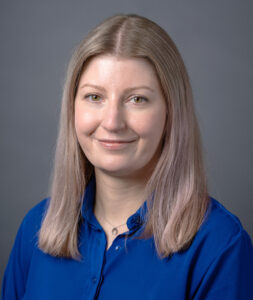


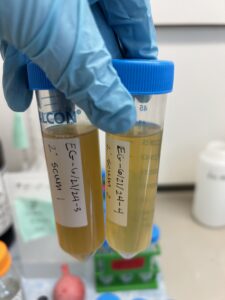

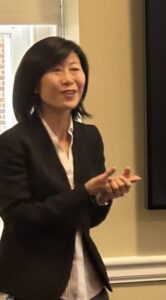

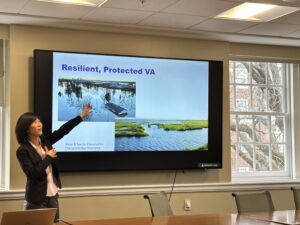



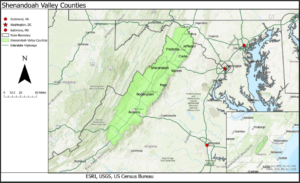



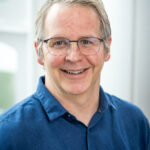

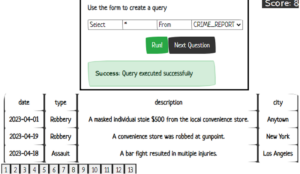
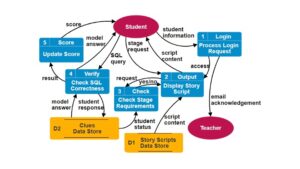

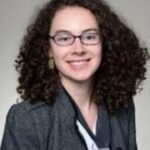
 To that end, Green sought the involvement of scholars in the field at several 4-VA partner schools to help her put the project into motion: Mary Caton Lingold at VCU and Bonnie Gordon at UVA. Both readily volunteered their time to bring this multi-level and multi-faceted research to fruition. Michael Nickens (a.k.a. Doc Nix — most recognized as the leader of George Mason University’s “Green Machine,”) also eagerly joined the team. Additionally, Maria Ryan, at Florida State University, came on to collaborate on the project.
To that end, Green sought the involvement of scholars in the field at several 4-VA partner schools to help her put the project into motion: Mary Caton Lingold at VCU and Bonnie Gordon at UVA. Both readily volunteered their time to bring this multi-level and multi-faceted research to fruition. Michael Nickens (a.k.a. Doc Nix — most recognized as the leader of George Mason University’s “Green Machine,”) also eagerly joined the team. Additionally, Maria Ryan, at Florida State University, came on to collaborate on the project.











 Professor in George Mason’s College of Science, Department of Biology, saw an opportunity to combine the experience and knowledge of other experts in the field to develop a novel genomic tool to address this issue.
Professor in George Mason’s College of Science, Department of Biology, saw an opportunity to combine the experience and knowledge of other experts in the field to develop a novel genomic tool to address this issue. remain In the wild, there are approximately 160 bongos in U.S. zoos and several hundred more on private ranches. As such, breeding and transfer strategies that increase genetic diversity and reduce inbreeding of captive animals are critical for the survival of the species.
remain In the wild, there are approximately 160 bongos in U.S. zoos and several hundred more on private ranches. As such, breeding and transfer strategies that increase genetic diversity and reduce inbreeding of captive animals are critical for the survival of the species. GMU researchers, Lim and his PhD student, Karen Holm, assembled their team — Aakrosh Ratan, Assistant Professor, University of Virginia; Klaus-Peter Koepfli, Senior Research Scientist, Smithsonian Mason School of Conservation; and Budhan Pukazhenthi, Research Physiologist, Smithsonian Conservation Biology Institute. 4VA funding was used to purchase the necessary supplies, reagents and equipment including DNA tests and probe sets.
GMU researchers, Lim and his PhD student, Karen Holm, assembled their team — Aakrosh Ratan, Assistant Professor, University of Virginia; Klaus-Peter Koepfli, Senior Research Scientist, Smithsonian Mason School of Conservation; and Budhan Pukazhenthi, Research Physiologist, Smithsonian Conservation Biology Institute. 4VA funding was used to purchase the necessary supplies, reagents and equipment including DNA tests and probe sets. centers and zoos were collected to begin the project. This resulted in a total of 207 samples from both current and historical ex situ populations (populations outside of the native ranges). They evaluated the effectiveness of the probe-set in generating high-quality genetic data from different sample types and for different genetic marker types. The data obtained are now being accessed for their ability to produce accurate information on animal kinship, genetic diversity and population structure, which will ultimately be used to guide precise captive breeding programs.
centers and zoos were collected to begin the project. This resulted in a total of 207 samples from both current and historical ex situ populations (populations outside of the native ranges). They evaluated the effectiveness of the probe-set in generating high-quality genetic data from different sample types and for different genetic marker types. The data obtained are now being accessed for their ability to produce accurate information on animal kinship, genetic diversity and population structure, which will ultimately be used to guide precise captive breeding programs.